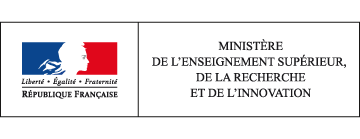10 access to higher education
70.1% of general baccalauréat holders enrolled at university, i.e. three points less than in 2000. More than one in two technological baccalauréat holders enrolled in a short vocational course (STS or IUT). STS were the preferred course for vocational baccalauréat holders, as 27.8% enrolled in them, i.e. 2.4 points more than in 2014. This year saw a marked rise in dual CPGE-university enrolments. Comparisons could therefore not be made between 2015 and previous years in terms of university entrance.
University was still the study route taken by most baccalauréat holders. University enrolment rates dropped continuously from 2000 to 2008 before stabilising during the next four years. Following a very modest rise in 2013 and 2014, 2015 saw a marked increase in the apparent enrolment rate (+ 4.3 points), mainly due to the systemisation of dual enrolments of students in preparatory courses and university (see methodology) (table 10.01, chart 10.02). Enrolment rates for selective courses (IUT, STS and CPGE) dropped slightly this year.
Scientific baccalauréat holders stand out for their tendency to opt for scientific fields of education at university excluding healthcare (27.6%), medical studies (20.2%) and preparatory classes (18.1%). 71.8% of series S baccalauréat holders enrolled at university, close to seven points more than in 2014. This rise relates to the dual enrolments of students in CPGE and is particularly relevant to the series S baccalauréat holders enrolling in scientific courses (+10.5 points). Series S baccalauréat holders also enrolled in engineering schools (excluding internal university schools counted among the scientific fields of education in universities).
Short vocational courses, especially STS, continued to attract the majority of technological baccalauréat holders. Enrolment rates of technological baccalauréat holders in STS (including apprenticeships) had dropped significantly between 2010 and 2013 (-6.4 points) due to increased opportunities offered to vocational baccalauréat holders. However, it stabilised in 2014 and rose again in 2015, reaching 41.5%. Apprenticeship was the chosen route of around 4% of technological baccalauréat holders to continue their studies in STS, and this figure has remained stable for the last five years. 11.5% of technological baccalauréat holders enrolled in preparatory classes for DUT. This rate remained stable compared with 2014.
The second most popular higher education option for technological baccalauréat holders was university (33.4%); their enrolment rate is on the upturn here since 2013 after several stable years. This rise benefited the general or healthcare fields of education more than DUT preparatory courses. It can be explained by the dual enrolments in CPGE, that are nevertheless clearly less frequent than for the general baccalauréat holders.
The STI2D baccalauréat holders continued to show a preference for short courses (STS or IUT) which attracted six out of ten students; nevertheless this rate fell in 2015 (-3.1 points) compared with 2014 in favour particularly of long university courses (+2.2 points).
The majority of vocational baccalauréat holders (27.8%) entered an STS, a rise of 2.4 points over 2014. 6.7% followed the apprenticeship route. It was easier for these baccalauréat holders to enrol given the decline in their numbers compared with 2014 (-14,100) following completion of the vocational baccalauréat reform. 8.3% of vocational baccalauréat holders enrolled at university. Only 0.6% enrolled in DUT preparatory classes.
How to cite this paper :
close
Key figures
Metropolitan France + overseas departments
Metropolitan France + overseas departments
Metropolitan France + overseas departments
Metropolitan France + overseas departments
Metropolitan France + overseas departments
10.01 Change in enrolment rates in higher education (%) 1
1 See definitions opposite.
2 Les bacheliers (toutes séries) poursuivant leurs études en STS par la voie de l'apprentissage sont inclus à partir de 2010.
3 La source utilisée pour recenser les apprentis (SIFA) ne distingue pas le détail des séries du bac et ne permet donc pas d'inclure les taux d'inscriptions en STS par apprentissage à ce niveau de détail.
MAAF, SAFRAN
You can embed this table to your website or your blog by copying the HTML code and pasting it into the source code of your website / blog:
close
10.02 Rate of immediate enrolment by 2053 baccalauréat holders in the different higher education study tracks (%) 1
1 The same student can enrol for several study tracks. Rates of access by study track are therefore not additive (total greater than 100%).
2 Only school status for S and STI2D bac.
MAAF, SAFRAN
You can embed this chart to your website or your blog by copying the HTML code and pasting it into the source code of your website / blog:
close
Related statistical publications
 Note flash SIES 21 - Les étudiants en sections de technicien supérieur en 2016-2017 - Mathias Denjean - December 2016
Note flash SIES 21 - Les étudiants en sections de technicien supérieur en 2016-2017 - Mathias Denjean - December 2016 
 Note flash SIES 22 - Les étudiants en classes préparatoires aux grandes écoles en 2016-2017 - Mathias Denjean - December 2016
Note flash SIES 22 - Les étudiants en classes préparatoires aux grandes écoles en 2016-2017 - Mathias Denjean - December 2016 
 Note flash SIES 16 - Inscription des nouveaux bacheliers entrant en première année à l'université en 2016-2017 - Aurélie Delaporte, Diane Marlat - November 2016
Note flash SIES 16 - Inscription des nouveaux bacheliers entrant en première année à l'université en 2016-2017 - Aurélie Delaporte, Diane Marlat - November 2016 Translation
 Etat de l'enseignement supérieur et de la rechercheL'état de l'Enseignement supérieur et de la Recherche en France n°10 - Avril 2017
Etat de l'enseignement supérieur et de la rechercheL'état de l'Enseignement supérieur et de la Recherche en France n°10 - Avril 201710 - l’accès à l’enseignement supérieur - Aline Pauron






